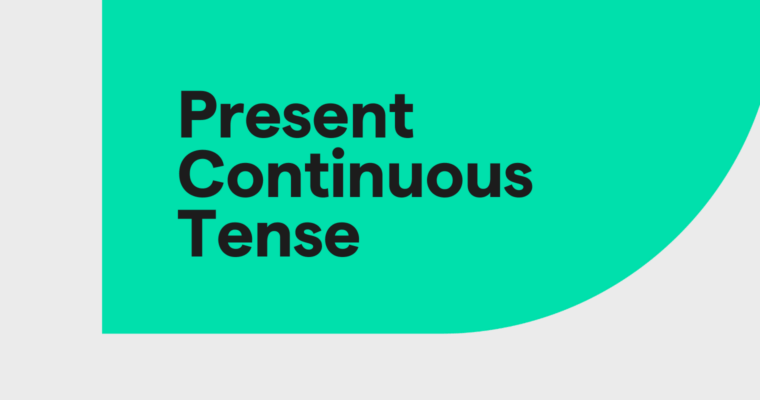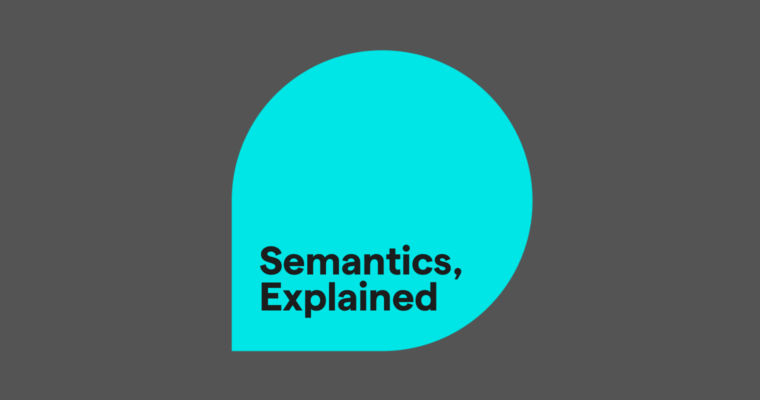
- The present continuous tense is a verb tense that expresses an action that is happening in the present and may continue into the future: I am listening to music.
- The present continuous is often used in conversation and informal writing to talk about plans and intentions for the future: We are cleaning our apartment tomorrow.
- The present continuous is formed with a simple present conjugation of the verb to be and the present participle of the main verb, which is almost always a dynamic verb.
- In sentences using the present continuous, the subject and verb are often combined in a contraction: I’m listening to music.
Here, we’ll discuss how to use the present continuous tense correctly and provide examples.
Table of contents
What is the present continuous tense?
Present continuous tense formula
When to use the present continuous tense
When not to use the present continuous tense
Simple present vs. present continuous tense
What is the present continuous tense?
The present continuous tense, also called the present progressive, is a verb tense that expresses an action that is in progress or happens frequently in the present.
Present continuous tense formula
The present continuous tense formula is: to be (am, is, are) + [present participle of the main verb].
When to use the present continuous tense
One of the main uses of the present continuous tense is to indicate that an action is currently happening:
The present continuous also frequently describes something that occurs frequently or habitually, often with a time adverb such as regularly or always:
Another common use for the present continuous is to convey that a situation is temporary:
A sentence that describes a new trend or a change that is developing over time will often use the present continuous as well:
One of the most common uses of the present continuous is not to talk about the present at all but about future plans or intentions:
Common dynamic verbs that use the present continuous tense
| Active Verbs | Process Verbs | Sense Verbs |
| ask | arrive | ache |
| call | change | feel (as in touch) |
| eat | develop | hurt |
| help | evolve | listen |
| hit | fall | see |
| jump | grow | smell (actively) |
| look at | improve | taste (actively) |
| play | mature | touch |
| throw | progress | watch |
Forming negative sentences in the present continuous tense
A negative statement in the present continuous tense expresses that an action or a condition is not happening now, doesn’t happen frequently, or isn’t planned for the future. The most common way to make the present continuous negative is by adding the word not between the correct form of to be and the present participle of the main verb.
Forming questions in the present continuous tense
To form questions in the present continuous tense, invert the structure of the formula for statements: correct form of to be + [subject] + [present participle of main verb].
When not to use the present continuous tense
In general, the present continuous tense doesn’t work well with stative verbs. Stative verbs show states of mind or existence that do not normally show progression. These states can include emotions (to love), possession (to belong), and thoughts (to recognize). Stative verbs can usually stay in the simple present.
Common stative verbs that don’t use the present continuous
| Opinion Verbs | Ownership Verbs | Emotion Verbs |
| deserve | belong | dislike |
| feel | lack | hate |
| know | need | like |
| recognize | own | love |
| understand | possess | regret |
Verbs with both dynamic and stative senses
Some verbs have senses that are dynamic and senses that are static. The verb to think is such a verb. In its dynamic form, to think, referring to mental activity, can be continuous:
But in its stative form, when it refers to holding an opinion or a belief, to think is more natural in the simple present:
Linking verbs
Linking verbs (such as to be, to appear, to become, to feel, and to look), which link the subject of a sentence to a subject complement, overlap with stative verbs, as they also identify states of being.
However, linking verbs are a bit more varied in how they work with the present continuous or in whether they do it at all. For example, to be uses the present continuous to express that what it is identifying with the subject is a temporary state, as in this sentence:
Sia isn’t necessarily cautious by nature; she’s currently experiencing a condition that is making her cautious in the short term. By contrast, when the state of being that to be links to the subject is a more permanent one, the simple present, not the present continuous, expresses it correctly:
Simple present vs. present continuous tense
The simple present tense is generally used for talking about habits, general truths, routines, and long-term or permanent states. It can often be spotted alongside time adverbs that refer to frequency, including always, never, sometimes, every day, and usually.
For a third-person singular subject, it is formed by adding -s or -es to the base form of a verb:
The present continuous, on the other hand, is used for discussing actions that are currently in progress and for temporary situations—often with time adverbs such as now, currently, at the moment, and today—as well as for discussing intentions for the future.
The present continuous uses a simple present form of the auxiliary verb to be (is for a third-person singular subject) followed by the present participle of the main verb:
Present continuous tense FAQs
What does the present continuous tense do?
The present continuous tense describes actions that are happening now or frequently or are planned for the near future. It is formed with a simple present form of to be (am, is, are) followed by the present participle form (-ing) of the main verb.
When should I use the present continuous tense?
Use the present continuous for ongoing actions, temporary situations, future plans, an emphasis on repeated actions, and new and developing situations.
What is the difference between the present continuous and the simple present tense?
The present continuous describes actions in progress or temporary states, while the simple present describes habitual actions or general truths.
Can I use the present continuous tense with all verbs?
No, stative verbs (such as know, prefer, and belong) generally cannot use the present continuous because they describe states, not actions.
How do I form questions and negatives in the present continuous tense?
To form questions, invert the subject and the auxiliary verb to be.
For negatives, add not between to be and the main verb.






